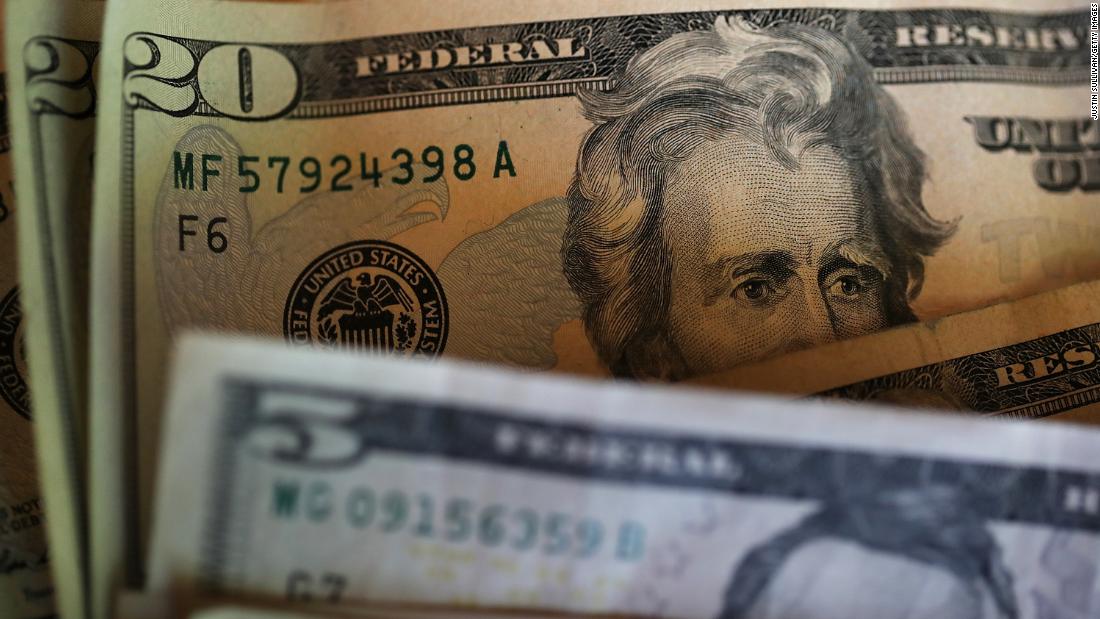People are saving more than ever. Here’s where to stash your cash

The personal savings rate — the amount people are saving as a percentage of their disposable income — skyrocketed to 33% in April. It had been around 8% for months, but then ticked up to 13% in March before surging in April, according to new data from the US Bureau of Economic Analysis. This is by far the highest savings rate recorded since BEA started tracking it in 1959. The accumulation of cash is largely due to the pandemic, which has made people cautious about their health and their finances and has kept many from their routine spending habits, said Ken Tumin, a banking expert at DepositAccounts.com, a bank account comparison site. “People are actually seeing the importance of having a solid emergency fund,” he said. “Everyone knows someone who has had a job loss or they’ve experienced it themselves. It is a wake-up call to have an emergency fund within easy access.” At the same time, stimulus payments and tax refunds have been dropping into Americans’ banks accounts, helping them to build up their savings stash. But with interest rates at historic lows, it’s hard to earn much on that cash.Here’s what you need to consider when looking for a place to store your emergency savings.Traditional savings accountsInterest rates on savings accounts had been dropping since last summer. And then they fell even lower in March after the Federal Reserve slashed the federal funds rate in an emergency move as the coronavirus outbreak took hold. The national average rate on all savings accounts this week was 0.06% annual percentage yield, or APY, according to the FDIC. The big banks, like Chase, Wells Fargo or Bank of America offer savings accounts closer to 0.01%. Certain premium accounts may be slightly higher.That’s not much of a return. But, for many savers in this ultra low-rate envrionment, the benefit traditional savings accounts do offer is convenience. While both traditional and online savings accounts are FDIC insured, the accessibility to branches at traditional banks makes it easier to do things like deposit cash — something that’s more difficult to do with online savings accounts. But the big banks do tend to charge higher monthly fees.And those fees can add up, said Steven Chau, certified financial planner with Know Your Worth Financial of Tempe, Arizona. “The difference in interest rates in this environment are not going to outweigh the cost of a few fees,” said Chau.Online savings accountsTo earn a higher rate of return while maintaining easy access and security, online savings accounts are one of the best places for your cash, said Tumin. Companies like Ally Bank, Vio Bank, Nationwide by Axos Bank, Synchrony Bank or Marcus by Goldman Sachs, often have lower overhead than the major banks and will offer higher rates to attract customers. “They are FDIC insured and you can keep your existing checking account,” he said. The rates for online savings accounts have fallen, but they are still higher than at regular banks. Current rates available, according to comparison sites like NerdWallet, Investopedia, Bankrate or DirectAccount are topping out around 1.6%. First Foundation Bank is offering a rate of 1.6%, more than 26 times the national average rate.”Rates are above 1% now, but online savings account rates are falling,” said Tumin. “I wouldn’t be surprised if they fall to 1%.”At 1%, if you deposit $10,000, that’s the difference between earning $100 a year if the rate remained unchanged at an online bank versus $1 at the end of the year from a traditional savings account offering 0.01%.”This isn’t a great return, but it’s better than nothing for funds that need to stay liquid for any needs that might arise,” said Ryan Watermiller, certified financial planner at Ankeny Financial Planning in Iowa.Just be sure to read the fine print: Some online accounts charge a fee if you have not made a deposit or withdrawal within a certain number of months or if the balance drops below a specified amount. And there are some accounts that function like certificate of deposits by charging a penalty for closing the account before a specified amount of time.Alternatives to savings accountsCDs: Another safe place to put your money is a certificate of deposit, or CD. It’s similar to a savings account since it’s federally insured, but you agree to leave your money there for a period of time, such as six months, a year, five years or even longer. Typically, you earn more interest the longer your money is deposited. But, as with savings accounts, the interest isn’t much. The average 6-month CD has an interest rate of 0.17% and a 5-year CD has 0.52%, according to the FDIC.”Because CD rates have fallen so much, it isn’t a good time to lock in right now,” said Tumin. “There are now several online banks that cut their 5-year CD rates so low, they’re lower than their savings account rates.”But, he said, if you have a CD ladder already going, in which maturing CDs are rolled over to new CDs, stick with it. However, before automatically rolling over with your current bank, shop around, he said. “Even online banks have been cutting CD rates to all time lows, but not all of them,” he said. “Your bank may be one that is cutting rates and you may get a better rate elsewhere. Look around. You don’t want to lock into a very low rate if you can find something better.”Money market accounts: Money market accounts, which generally earn higher rates than savings accounts, may allow for check-writing or debit cards and can require a higher minimum deposit.Money market accounts earn an average of 0.09%, according to the FDIC.But there may be some fees involved. Some money market accounts may have monthly fees, inactive account fees or other fees for not adhering to specifications by the bank.High-yield checking accounts: High-yield checking accounts, sometimes called reward checking accounts, are usually offered by community banks or credit unions and offer rewards for meeting specific account requirements.The rates can be similar or better than online savings accounts at around 1.5% or higher, according to DepositAccounts, but you’re typically required to make a specific number of debit card payments or spend a certain amount of money from the account each month in order to get the higher rate.Most have no fees, but you do need to meet the requirements in order to earn the high interest rate.”Reward checking accounts can at least provide a way to earn some interest right now in an environment where rates are low and will remain low for some time,” said Tumin.







